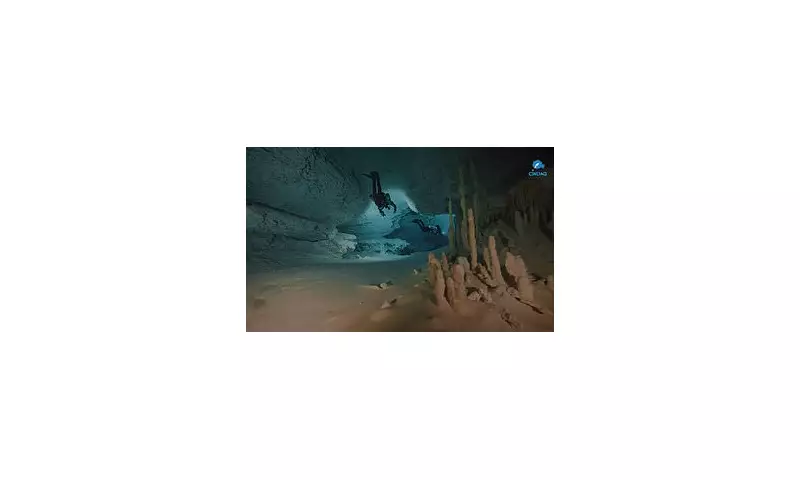
Beneath the picturesque resort landscapes of Mexico's Yucatan Peninsula, intrepid explorers have revealed an astonishing submerged universe of enormous chambers and winding passageways. The Ox Bel Ha network, which translates from Mayan as 'Three Paths of Water', constitutes the planet's most extensive underwater cave system.
A Submerged Labyrinth of Geological Wonders
This sprawling aquatic network contains spectacular natural formations including massive sinkholes and breathtaking crystal-coated chambers that researchers have dubbed 'ice palaces'. The system also hosts 38 distinct species of cave-adapted animals found nowhere else on Earth.
Dedicated cave divers have meticulously charted 325.6 miles (524 kilometres) of underground tunnels, though experts suspect significantly more passages remain undiscovered. Remarkably, since 2018 alone, explorers have navigated through an additional 108 miles (175 kilometres) of previously unmapped caves.
The primary research organisation, El Centro Investigador del Sistema Acuífero de Quintana Roo (CINDAQ), anticipates they might ultimately uncover more than 373 miles (600 kilometres) of caves before completing their investigations.
How This Unique Underwater World Formed
Ox Bel Ha currently ranks as the world's second-longest explored cave system, surpassed only by Kentucky's Mammoth Caves which extend at least 426 miles (686 km). Crucially, every metre of Mexico's cavernous network remains completely submerged in a distinctive blend of salt and freshwater.
Scientists attribute the extraordinary complexity of Ox Bel Ha to its unusual formation process. Millions of years ago, rainwater combining with dissolved carbon dioxide permeated through the Yucatan Peninsula's substantial limestone bedrock. This acidic solution gradually reacted with the limestone, sculpting vast channels and tunnels.
Approximately 18,000 years ago, significant climate transformations caused ocean levels to rise dramatically, flooding the caves and preserving this underground landscape exactly as we find it today.
This system stands out as one of Mexico's rare underwater caves that connect directly to the sea. This creates a distinctive layering effect with faster-moving freshwater resting above a largely stationary saltwater layer. Scientists call this mixing zone a 'halocline', which presents additional challenges for explorers.
The Perilous Work of Underwater Cave Exploration
Initial exploration of the Ox Bel Ha network commenced in 1996 when adventurers discovered an entrance within one of the region's natural sinkholes, known locally as cenotes.
Exploring submerged cave systems presents exponentially greater difficulties than investigating dry caves. While cavers in dry systems like Mammoth Cave must navigate narrow constrictions, underwater explorers must simultaneously manage their limited oxygen supplies while negotiating tight spaces.
Cave divers must carefully balance the amount of breathing gas they carry against the reality that they might need to drag their equipment through extremely confined passages. This makes extensive dives reaching deep underground exceptionally demanding, achievable only by highly skilled specialists.
Over the past three decades, explorers have progressively assembled a comprehensive map of Ox Bel Ha. As divers venture into unknown sections, they deploy guideline cables behind them, enabling safe return and facilitating length assessments of the cave network.
When divers repeatedly resurvey older cable sections, they frequently discover completely new tunnel networks previously overlooked. In 2022, a diving team following an existing cable approximately two miles into the cave made an unexpected discovery.
The divers reported to In Depth Magazine: 'To our surprise it looked like we were the first ones there.' Through marathon dives lasting six to eight hours, these explorers advanced up to 6,370 metres into the cave system, uncovering 6.2 miles (10.1 kilometres) of new passages.
However, mapping Ox Bel Ha's full extent has proven dangerous. In April 2022, an experienced Russian diver who had been documenting the cave for six months embarked from the Cenote Odyssey sinkhole and never returned. Investigators located the diver floating face down within reach of a spare gas tank, his own tank completely empty.
Evidence suggests the diver became trapped in a silt cloud while investigating a new fissure, panicked, and consumed his remaining air supply more rapidly than anticipated.





